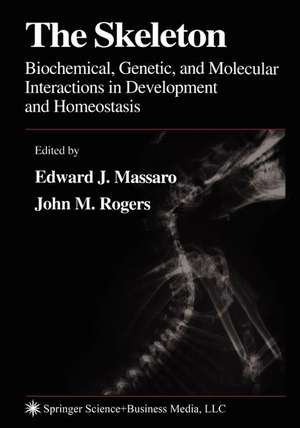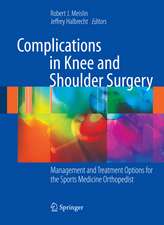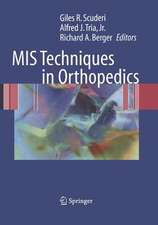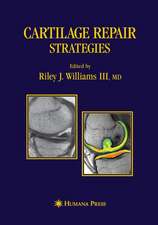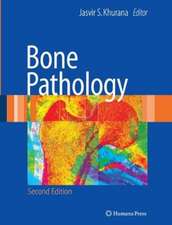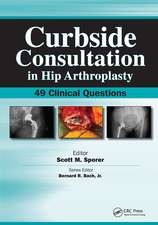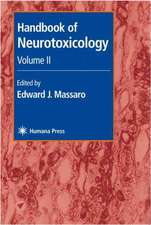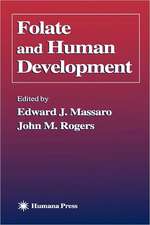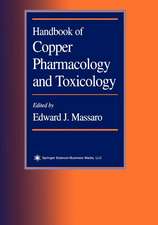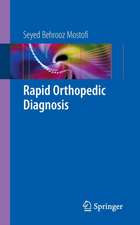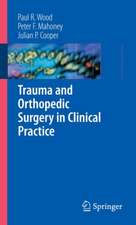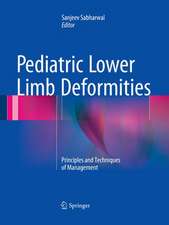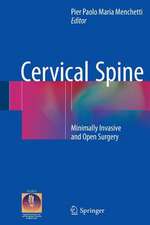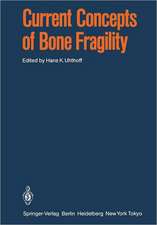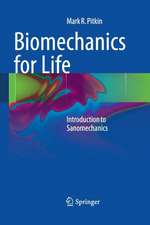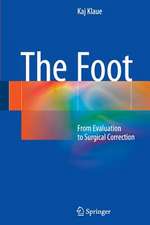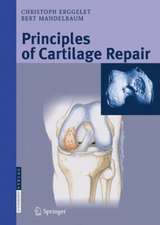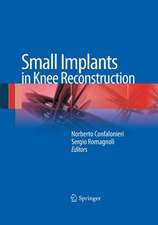The Skeleton: Biochemical, Genetic, and Molecular Interactions in Development and Homeostasis
Editat de Edward J. Massaro, John M. Rogersen Limba Engleză Paperback – 5 noi 2010
| Toate formatele și edițiile | Preț | Express |
|---|---|---|
| Paperback (1) | 793.07 lei 6-8 săpt. | |
| Humana Press Inc. – 5 noi 2010 | 793.07 lei 6-8 săpt. | |
| Hardback (1) | 1121.49 lei 6-8 săpt. | |
| Humana Press Inc. – 16 feb 2004 | 1121.49 lei 6-8 săpt. |
Preț: 793.07 lei
Preț vechi: 834.80 lei
-5% Nou
Puncte Express: 1190
Preț estimativ în valută:
151.79€ • 157.85$ • 127.01£
151.79€ • 157.85$ • 127.01£
Carte tipărită la comandă
Livrare economică 15-29 martie
Preluare comenzi: 021 569.72.76
Specificații
ISBN-13: 9781617374272
ISBN-10: 161737427X
Pagini: 448
Ilustrații: XVIII, 428 p.
Dimensiuni: 178 x 254 x 24 mm
Greutate: 0.77 kg
Ediția:Softcover reprint of hardcover 1st ed. 2004
Editura: Humana Press Inc.
Colecția Humana
Locul publicării:Totowa, NJ, United States
ISBN-10: 161737427X
Pagini: 448
Ilustrații: XVIII, 428 p.
Dimensiuni: 178 x 254 x 24 mm
Greutate: 0.77 kg
Ediția:Softcover reprint of hardcover 1st ed. 2004
Editura: Humana Press Inc.
Colecția Humana
Locul publicării:Totowa, NJ, United States
Public țintă
ResearchCuprins
1 Molecular Basis of Cell—Cell Interaction and Signaling in Mesenchymal Chondrogenesis.- 2 Chondrocyte Cell Fate Determination in Response to Bone Morphogenetic Protein Signaling.- 3 Regulation of Chondrocyte Differentiation.- 4 Continuous Expression of Cbfa1 in Nonhypertrophic Chondrocytes Uncovers Its Ability to Induce Hypertrophic Chondrocyte Differentiation and Partially Rescues Cbfa1-Deficient Mice.- 5 Molecular Biology and Biosynthesis of Collagens.- 6 Mechanotransduction Pathways in Cartilage.- 7 Molecular Genetic Analysis of the Role of the HoxD Complex in Skeletal Development: Impact of the loxP/Cre System in Targeted Mutagenesis of the Mouse HoxD Complex.- 8 Control of Development and Homeostasis Via Regulation of BMP, Wnt, and Hedgehog Signaling.- 9 FGF4 and Skeletal Morphogenesis.- 10 Retinoid Signaling and Skeletal Development.- 11 Retinoids and Indian Hedgehog Orchestrate Long Bone Development.- 12 Synergy Between Osteogenic Protein-1 and Osteotropic Factors in the Stimulation of Rat Osteoblastic Cell Differentiation.- 13 Bone Morphogenic Proteins, Osteoblast Differentiation, and Cell Survival During Osteogenesis.- 14 Osteoclast Differentiation.- 15 Soluble Signals and Insoluble Substrata: Novel Molecular Cues Instructing the Induction of Bone.- 16 Perichondrial and Periosteal Regulation of Endochondral Growth.- 17 Computer Simulations of Cancellous Bone Remodeling.- 18 Effects of Microgravity on Skeletal Remodeling and Bone Cells.- 19 Quantitative Analyses of the Development of Different Hard Tissues.- 20 Fetal Mineral Homeostasis and Skeletal Mineralization.- 21 Control of Osteoblast Function and Bone Extracellular Matrix Mineralization by Vitamin D.- 22 Role of Pax3 and PDGF-? Receptor in Skeletal Morphogenesis and Facial Clefting.- 23 Genetics ofAchondroplasia and Hypochondroplasia.- 24 Effects of Boric Acid on Hox Gene Expression and the Axial Skeleton in the Developing Rat.- 25 Toxicant-Induced Lumbar and Cervical Ribs in Rodents.- 26 Experimental Skeletal Dysmorphology: Risk Assessment Issues.
Recenzii
"...a valuable book...Every substantial biomedical library should have this book." -Doody's Health Sciences Book Review Journal
"Very detailed, clinical and laden with biological terminology, which makes the preface a must for new readers." -E-STREAMS
"Authoritative and up-to-date... a cutting-edge survey of diverse critical issues in bone biology." - Clinical Laboratory International
"Very detailed, clinical and laden with biological terminology, which makes the preface a must for new readers." -E-STREAMS
"Authoritative and up-to-date... a cutting-edge survey of diverse critical issues in bone biology." - Clinical Laboratory International
Textul de pe ultima copertă
The skeleton is a complex multifunctional system. In addition to its mechanical/structural support function, it is, as the major reservoir of calcium, intimately involved in intracellular signaling pathways of critical importance both in the complex process of development and the maintenance of physiologic homeostasis. It is also, as the major source of blood cells, a critical part of the circulatory, respiratory, and immune systems. In The Skeleton: Biochemical, Genetic, and Molecular Interactions in Development and Homeostasis, established biomedical researchers, developmental biologists, and clinical practitioners offer a cutting-edge survey of diverse critical issues in bone biology. Topics range from chondrogenesis, chondrocytes, and cartilage to skeletal dysmorphology, and include the control of skeletal development, osteoblastic cell differentiation, and bone induction, growth, remodeling, and mineralization. The authors focus on the biochemical, genetic, and molecular interactions that support the development and homeostasis of the skeleton. Their state-of-the-art understanding of bone physiology-and how it is modified throughout all the stages of life-offers novel approaches for improving the endurance of load-bearing implants, achieving life-long optimal bone strength, overcoming microgravity (space flight), and hastening the healing of fractures, osteotomies, and arthrodeses. Equally important are their insights into metaphyseal fractures in the aged, into the mechanism(s) of osteopenia and osteoporosis, and into how and why, during menopause, healthy women lose only bone adjacent to the marrow.
Authoritative and up-to-date, The Skeleton: Biochemical, Genetic, and Molecular Interactions in Development and Homeostasis offers biomedical and clinical researchers rapid access to the latest understanding of the biochemistry, physiology, pharmacology, genetics, molecular biology, developmental biology, and aging of the skeleton.
Authoritative and up-to-date, The Skeleton: Biochemical, Genetic, and Molecular Interactions in Development and Homeostasis offers biomedical and clinical researchers rapid access to the latest understanding of the biochemistry, physiology, pharmacology, genetics, molecular biology, developmental biology, and aging of the skeleton.
Caracteristici
Includes supplementary material: sn.pub/extras
